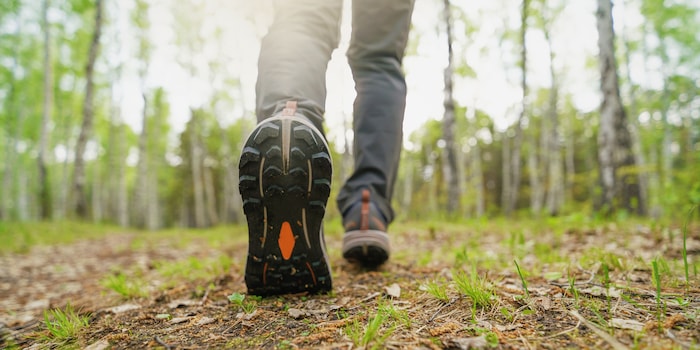
Changing gait can alleviate osteoarthritis pain
According to a new study, bending your feet differently when walking can alleviate the symptoms of knee osteoarthritis. However, the most gentle foot angle must be determined individually for each person.
Turning the feet slightly inwards or outwards when walking can reduce osteoarthritis-related knee pain and slow down the progression of the disease. This is the conclusion reached by a research group led by Scott Uhlrich from Stanford University (USA).
Knee osteoarthritis is a disease of the knee joint that is associated with progressive destruction of the cartilage and other joint structures. Obesity, joint injuries and advanced age increase the risk of developing the disease. Patients suffer from load-dependent pain and limited mobility. Knee osteoarthritis mainly occurs in the second half of life and is then one of the most common joint diseases. It is estimated that every third person over the age of 60 is affected. The disease cannot be cured, but can be alleviated through physical activity, avoiding obesity and medication.
Uhlrich and his team investigated whether changing the position of the foot when walking can reduce the strain on the knee joint and thus the symptoms. They had 68 men and women suffering from mild to moderate knee osteoarthritis walk on treadmills and recorded their movements. A computer programme then determined the stresses occurring in the knee joint for each participant. The research group then used a computer model to calculate how much this would reduce the stress on the joint for each individual person for four different foot positions when walking - angled inwards or outwards by 5 degrees or 10 degrees. The team then randomly divided the study participants into two groups: One was trained to walk with the individual's theoretically gentlest foot posture, the other was not. One year later, the patients reported how their pain had changed and were also examined using magnetic resonance imaging (MRI).
In the people who had changed their gait pattern according to the recommendations of the computer model, the maximum load in the knee joint decreased by several percentage points, as the examinations showed. They also complained significantly less of pain than those who had maintained their normal gait pattern and, according to the MRI data, cartilage degradation appeared to have progressed more slowly in them.
The experts conclude that their procedure could help to alleviate the symptoms of the disease as a non-invasive, relatively inexpensive treatment. However, they emphasise that the results need to be confirmed in further studies, as the number of study participants was still quite small at 68. The study also showed how important it is to adapt the foot posture individually to the walking behaviour of each person affected. Previous approaches to reducing osteoarthritis-related knee pain by changing the gait pattern had been less successful, partly because all patients were trained to adopt the same foot posture.
Spectrum of science
We are partners of Spektrum der Wissenschaft and want to make well-founded information more accessible to you. Follow Spektrum der Wissenschaft if you like the articles.
Original article on Spektrum.de
Experts from science and research report on the latest findings in their fields – competent, authentic and comprehensible.
From the latest iPhone to the return of 80s fashion. The editorial team will help you make sense of it all.
Show all